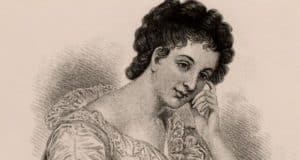The Art of Calligraphy: A Cross-Cultural Craft

Updated On: April 04, 2024 by Raghda Elsabbagh
Calligraphy is an artistic practice that transcends cultural boundaries, uniting humanity through the beauty of written form. Embedded in its strokes are the history, culture, and philosophical undertones that vary across civilisations. From the intricate brushwork found in East Asian scripts to the sweeping curves of Arabic calligraphy, each tradition carries its own aesthetic and symbolic significance. The practice of calligraphy extends beyond mere writing; it is a craft where artistry and language intertwine to create visual harmony and convey deeper meanings.

Understanding the fundamentals of calligraphic art involves acknowledging its role in the visual arts and the written word throughout history. As we explore the nuances of different calligraphic styles, we begin to appreciate their influence in religious contexts and their evolution into contemporary forms. Techniques and skill development play a critical role in mastering the calligrapher’s craft, while cross-cultural exchange continues to shape its future and ensure its preservation. Calligraphy is not just a relic of the past. It’s a living art that still finds relevance in modern applications and practices, highlighting the enduring importance of the craft in a rapidly digitalising world.
Table of Contents
Historical Journey of the Art of Calligraphy
In this section, we will trace the path of calligraphy from its beginnings to its significance across various cultures. You’ll find how this art form intertwines with cultural identity and heritage.
Ancient Origins and Evolution of the Art of Calligraphy
The art of calligraphy found its roots nearly 5,000 years ago in Mesopotamia with the cuneiform script. The journey of calligraphy is as ancient as civilisation itself, evolving through myriad forms and styles. In China, calligraphy is revered as an essential scholarly art, combining philosophical depth with aesthetic beauty. Chinese calligraphy, with its five script styles, has been a medium of personal expression and a reflection of one’s character.
Moving forward in time, this art proliferated across cultures. Notably, the Islamic world honed Arabic calligraphy into a divine art form, intrinsic to the visual expression of the Quran and Islamic texts. Similarly, Japanese calligraphy, or Shodo, echoes the Zen philosophy where every stroke captures the moment’s spontaneity, often emulating natural forms.
Significance in Different Cultures
Beyond aesthetics, calligraphy serves as a vessel of cultural identity. In the Islamic tradition, calligraphy is often the primary form of artistic expression due to the prohibition of figure drawing, making it a key component of Islamic art and architecture. Meanwhile, Gothic calligraphy emerged in medieval Europe, its sharp and angular lettering a stark contrast to the flowing scripts of the East, yet equally representative of the period’s cultural and historical narrative.
Each form of calligraphy, from the bold strokes of Gothic scripts to the fluid elegance of Arabic calligraphy, transcends mere writing. It encapsulates the heritage, spiritual beliefs, and philosophic ideals of its time and place, making it a deeply rooted element of our shared human history.
Fundamentals of Calligraphic Art

In the realm of calligraphic art, it’s vital to grasp the foundational elements and the tools that bring this craft to life. The meticulous nature of calligraphy demands precision and a clear understanding of its basics to achieve the refined elegance associated with the art.
Understanding the Basics of the Art of Calligraphy
We consider calligraphy a visual art related to writing, where the expression of words transcends their mere communicative function. Every stroke and detail is intentional, contributing to the overall grace and style of the piece. The technique is paramount; even the way one holds the pen or brush impacts the final result. Calligraphers pay special attention to the pressure, angle, and flow which define the aesthetics of each character.
The various styles of calligraphy, such as the traditional Kufic or the flowing scripts of East Asia, each carry a history and reflect the culture from which they originate. However, irrespective of style, all calligraphy shares the common thread of transforming handwriting into a form of art.
Key Tools and Materials
The pen and brush are central to calligraphy and have evolved uniquely across cultures. Whether it’s the flexible tip of a reed pen creating robust Arabic letters or a fine brush detailing intricate Chinese characters, the choice of tool influences the calligraphy’s character.
A brief list of essential calligraphy materials:
- Pens: Including nib pens for traditional Western scripts and qalams used in Islamic calligraphy
- Brushes: Various sizes and fibres, depending on the required precision and fluidity
- Ink: Often in liquid form, providing the necessary contrast against the paper
- Paper: A smooth surface allows for consistent ink application and minimal bleeding
Each material must be selected with consideration for the planned artwork. The quality and type of these tools and substrates can significantly affect the subtleties of the calligrapher’s work, like ink absorption and line quality. Our role as calligraphers is to understand the interplay between these materials, mastering their use to bring forth the fullest potential of our script.
Cultural Nuances and Styles
In this section, we’ll explore the rich tapestry of calligraphic traditions, examining the distinct styles and cultural significance within different regions.
Calligraphy in Asian Traditions
Chinese calligraphy is revered for its dynamic expression and historical depth, embodying the cultural values and aesthetic principles of East Asia. It is characterised not only by its diverse script types, such as the fluid and ancient seal script, but also by the esteemed cursive script, which demands a practised brush and a liberated spirit. Japanese calligraphy, while influenced by Chinese masters, has forged its own identity, often encapsulated in the Zen-inspired brushstroke that seeks to capture the moment.
Islamic and Arabic Influence
Centred on the Islamic principle of decorating words to glorify their meaning, Arabic calligraphy such as thuluth and naskh scripts are integral to Islamic art. Thuluth, with its elegant, elongated lines, adorns architecture and manuscripts alike. Naskh offers a more cursive style, used widely in the production of the Quran. Ruq’ah, another style, offers a simpler, more legible script for everyday writing. All these forms share a common thread of skilled craftsmanship and devotion.
Western Calligraphy and its Adaptations
Western calligraphy traces its roots through a lineage of scripts from the solemn Gothic to the intricate Copperplate. Gothic script, once prevalent in medieval Europe, is distinguished by its bold, angular lines, while Copperplate is a product of the 16th century, known for its flowing elegance and fine lines. These styles and others have adapted over time, reflecting the ever-evolving nature of Western artistic sensibilities.
Aesthetic and Philosophical Aspects
We delve into the intricate fusion of beauty and philosophy found within the craft of calligraphy, showing how lettering becomes more than a mere form of writing; it embodies an artistic expression that connects deeply with both the creator and the observer.
The Art of Lettering
Lettering in calligraphy is not just writing; it represents a precise dance of form and fluidity. Each stroke carries a specific aesthetic value, meticulously crafted to convey beauty and meaning. It’s a visual art where the act of creating each character is imbued with intentions and emotions, weaving a tapestry of expressive finesse.
Symbolism and Expression
In calligraphy, symbols serve as vessels of communication, carrying layers of cultural significance and personal expression. The calligrapher channels their spirit through their work, embedding it with a unique narrative that echoes far beyond the ink. Bridging the gap between visual art and literature, these symbols encapsulate a cross-cultural craft pulsating with artistic vitality.
Calligraphy in Visual Arts
Calligraphy, as a visual art form, beautifully melds textual expression with aesthetic presence. It extends far beyond mere writing, impacting various domains of art and design, where letterforms and scripts interplay with visual elements to create harmonious compositions.
Combining Text and Imagery
In the realm of graphic design and iconography, calligraphy has a storied tradition of integrating text within visual narratives. Here, the fluidity of strokes can often be synonymous with brushstrokes in a painting, enhancing the artistic dialogue between words and images. This intersection is also evident in Islamic art, where calligraphic inscriptions are woven into intricate patterns that serve both an ornamental and symbolic purpose.
Influence on Architecture and Fine Art
The influence of calligraphy in architecture is perhaps most apparent within Islamic culture, where phrases from the Quran are frequently inscribed into the facades and interiors of mosques, illustrating a marriage of divine inspiration with structural artistry. In fine art, artists may incorporate calligraphic elements into sculptures, pottery, and ceramics, allowing the text to provide not only context but also to embellish and inform the shape and contour of the piece.
The Art of Calligraphy and the Written Word
Calligraphy is a visual art related to writing that involves the design and execution of lettering with a broad-tipped instrument, brush, or other writing tool. Within this craft, diverse scripts and alphabets represent different cultures and historical periods, each with linguistic significance and beauty.
Scripts and Alphabets
Scripts such as the Gothic script, known for its dense and angular lettering, evoke the cultural aesthetics of medieval Europe. This script’s prominence in Western manuscripts reflects the historical importance placed on creating visually striking text. On the other hand, alphabets vary widely, from Roman to Arabic, each comprising a set of letters or symbols that represent the phonemes of a language. In the process of entextualisation, the meanings and sounds of spoken language are embedded into written symbols, offering a diverse range of alphabets and styles for calligraphers to choose from.
Art of Composing Written Content
The composition of written content in calligraphy goes beyond mere transcription. It is an art that involves choosing the right style—whether it be a flowing cursive or the more regimented strokes of block letters—to convey not just information but also emotion and tradition. In creating calligraphic works, one must consider the linguistic context, as well as the visual harmony and aesthetics of the text. Through calligraphy, the written word is transformed into an evocative representation of the language it embodies.
Calligraphy in Religious Contexts

Calligraphy sustains a treasured position in the world’s religious traditions, serving both as a form of devotion and a means to preserve sacred texts. In many cultures, it’s an expression of artistic dedication to the divine.
Significance in Islamic Culture
Islamic calligraphy is profoundly esteemed within our community as a spiritual art that harmonises beauty with the divine message of the Quran. Historically, it has been instrumental in conveying the word of Allah, and Islamic culture finds its most celebrated expression in this art form. The Arabic script, intricate and ornate, is the vessel through which the sacred text gains visual reverence. It’s not merely a means of recording; it’s an embodiment of faith and a respectful craft that has beautified mosques, religious texts, and Islamic architecture.
The grace of Islamic calligraphy stems from its role in disseminating religious texts. Artists engage in this craft not only to create an aesthetic experience but also to produce a spiritual connection through the written word.
Buddhism and Calligraphy in East Asia
In East Asia, Buddhism has similarly embraced calligraphy, regarding it as a meditative practice that captures the essence of religious teaching through brush strokes. Just as the chant of a mantra can be a form of meditation, so too can the brush’s movement across the paper be a means of centring and spiritual expression.
Buddhist monks have long incorporated calligraphy into their spiritual practice, believing that the act of creating calligraphy is a mindful exercise that aligns the creator with the teachings of Buddha. Through the brush, they convey the principles of Buddhism, and the art of calligraphy transcends into a form of religious art. The characters are more than symbols; they are seen as living, breathing embodiments of Buddhist wisdom.
As we explore these traditions, we find that calligraphy reaches beyond the confines of religious texts. It becomes an essential element of religious life and practice, offering us insights into the sacredness of the written word across different cultures.
Modern Applications and Practices

In the realm of modern calligraphy, we see a transformation in its use, evolving into vibrant elements of contemporary design and personal creativity. This craft bridges traditional artistry with modern needs, creating both aesthetic appeal and functional art.
Calligraphy in Contemporary Design
Graphic Design: Our graphics are often infused with calligraphy, enhancing the visual appeal of various media. Calligraphy lends a human touch to digital formats and is prevalent in the creation of invitations, brand identities, and advertising materials. It serves not only as a form of creative expression but also as a means of cross-cultural engagement, as design elements often synthesise influences from different traditions.
- Cross-Cultural Exchange: Calligraphy fosters a dialogue between cultures, integrating diverse stylistic elements into contemporary design. This exchange is evident in our growing library of typefaces, where typographic design often draws from calligraphic traditions, revealing a harmonious blend of historic and modern aesthetics.
Personal and Commercial Use
Invitations and Stationery: We weave calligraphy into personal stationery, bringing an individual’s touch to invitations, greeting cards, and thank-you notes. This personalisation imbues each piece with a sense of occasion and exclusivity that mass-produced items lack.
- Creative Expression and Commercial Ventures: From personalised gifts and home decor to event signage, calligraphy serves as a tool for creative expression. Businesses make use of this art to convey sophistication and attention to detail, demonstrating how calligraphy has moved beyond its classical confines into the hustle of commercial enterprises. It invigorates our experience with products and services, as seen in bespoke packaging and tailored branding efforts.
Utilising calligraphy within our creative and commercial pursuits reflects a deep appreciation for the craft’s versatility and its potential to infuse modern life with a sense of tradition and artistry.
Techniques and Skill Development
In calligraphy, the refinement of one’s technique and consistent practice are central to skill progression. Gaining mastery in calligraphy is a journey that requires patience and precision, from accurately forming the fundamental strokes to developing stylistic fluency in advanced compositions.
Mastering the Brush Strokes
Initially, it’s all about understanding the tool itself. The brush or pen must become an extension of our hand. Fundamental brush strokes form the essence of calligraphy; each curve and line must be practised repeatedly. Adequate pressure and consistent angle control are essential. Our focus starts with individual strokes, building muscle memory through repetition and patience, ensuring each stroke contributes to the desired detail in the letterforms.
Progressing from Beginner to Advanced
As we transition from basic strokes to more complex forms, the emphasis shifts to composition and style. Techniques become more advanced, integrating intricate details and exploring various fonts and layouts. This stage is where persistence evolves our foundational skills into a distinct calligraphic flair. We must nurture our creativity alongside technical skills, experimenting with contrast, spacing, and flow to achieve harmony in our work.
Preservation and Future of Calligraphy
In exploring the intersection of tradition and innovation, we’ll shed light on how calligraphy sustains its significance as an intangible cultural heritage and adapts within the digital landscape.
Calligraphy Art as Intangible Cultural Heritage
Calligraphy epitomises the enduring essence of intangible cultural heritage. It’s far more than mere writing; it’s an embodiment of the values, aesthetics and historical identity of various cultures around the world. As an intangible cultural heritage, the craft’s preservation often hinges on transmission through generations and the continuous practice by skilled artisans. Organisations like UNESCO have recognised the need to protect disciplines such as calligraphy as a form of cultural expression, promoting heritage conservation efforts that ensure these arts maintain their place in our shared human legacy.
Digital Age and Calligraphy’s Evolution
The advent of the digital age might suggest a potential eclipse of traditional arts like calligraphy. Yet, the reality is one of evolution rather than obsolescence. Digital tools and platforms offer new mediums for calligraphic expression, making it more accessible and varied than ever. Professionals use digital pens to create enchanting fonts, while online tutorials and communities encourage enthusiasts to keep the craft vibrant. Far from displacing traditional calligraphy, digitalisation enriches it, introducing this ancient art to new audiences and allowing it to flourish in our modern world.
Cross-Cultural Exchange and Influence

The practice of calligraphy has long transcended its boundaries, experiencing a rich cross-cultural exchange. Throughout history, it has absorbed elements from various cultures, leading to a diverse tapestry of artistic expression.
In the Middle East, calligraphy has been a fundamental part of the cultural heritage. We can see a fusion of Islamic traditions with calligraphy, where the fluidity of Arabic script has influenced Asian calligraphic styles. This form of art became not only a means of communication but also a symbol of spiritual and aesthetic values.
The adaptation of calligraphy through cultural interactions extends to the East as well. For instance, Zen Buddhism from Japan embraced the minimalist beauty and spontaneity of calligraphy, integrating it into the practice as a meditative process. The art form there is often characterised by a sense of dynamic movement and freedom.
Asian art, including disciplines like Shinto, has also been impacted by calligraphy. Shinto, the ethnic religion of Japan, incorporates calligraphic elements in various ceremonial and ritualistic contexts, reflecting a reverence for the written word.
Below is a succinct overview of how calligraphy has interacted across cultures:
- Middle East: Integration of Arabic script in Asian calligraphy
- Zen Buddhism: Emphasis on spontaneity and meditation
- Shinto: Calligraphy in ceremonial roles
- Adaptation: Blending of local traditions with calligraphy
Our exploration of the art of calligraphy as a cross-cultural craft demonstrates a remarkable blend of tradition and modernity, where time-honoured methods meet contemporary influences to create ever-evolving art forms.
Frequently Asked Questions

In this section, we address some of the most common inquiries about calligraphy, exploring its rich history, comparing traditional and modern styles, and discussing its cultural significance.
What are the origins and historical significance of the art of calligraphy in various cultures?
Calligraphy has a profound historical significance across numerous cultures, regarded as a sophisticated art form that harmonises aesthetics with the conveyance of language. Its origins can be traced back to ancient civilisations, where it was revered not just as a means of communication but also as a reflection of the society’s intellectual and artistic accomplishments.
How does modern calligraphy art differ from traditional calligraphic practices?
Modern calligraphy often incorporates a blend of classic techniques and contemporary innovation, allowing for more stylistic freedom compared to traditional practices. While it respects the foundational strokes and forms, modern calligraphy tends to be more experimental in nature.
What are the basic tools and techniques required for beginners in calligraphy?
Beginners in calligraphy should start with essential tools such as dip pens, ink, and high-quality paper. Mastering the basic techniques involves understanding how to hold the pen, as well as learning fundamental strokes, pressure control, and letter formation.
Which cultures are most renowned for their contributions to the development of calligraphy?
Several cultures are celebrated for their calligraphy, including those in China and the Islamic world. The Chinese contribution to this art form centres around brush techniques and character styles, while Islamic calligraphy is distinguished by its flowing scripts used to adorn architecture and texts.
In what ways does calligraphy serve as a bridge between art and cultural expression?
Calligraphy acts as a bridge between art and culture by encapsulating the aesthetic principles and literary heritage unique to a society. It combines visual art with written language, thereby preserving and expressing cultural identities and traditions.
Why do some societies regard calligraphy as an important aspect of their heritage and identity?
Many societies view calligraphy as a crucial aspect of their heritage and identity because it embodies the elegance and philosophical depths of their language and literature. It is often used ceremonially and historically, which makes it an intimate part of a culture’s legacy.






